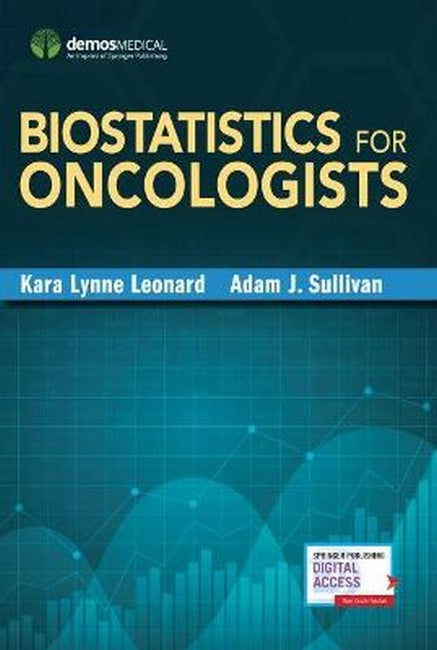I. General Statistical Concepts 1. Why study biostatistics? 1.1 What is biostatistics? 1.2 How is biostatistics useful for oncologists 2. Summarizing and Graphing Data 2.1 Types of data 2.1.1 Quantitative data 2.1.1.1 Discrete data 2.1.1.2 Continuous data 2.1.2 Qualitative data 2.1.2.1 Nominal data 2.1.2.2 Ordinal categorical data 2.2 Data summaries 2.2.1 Measures of Central Tendency 2.2.1.1 Mean 2.2.1.2 Median 2.2.1.3 Mode 2.2.2 Measures of Dispersion 2.2.2.1 Standard deviation 2.2.2.2 Interquartile range 2.3 Statistical Graphs 2.3.1 Histogram 2.3.2 Box Plot 2.3.3 Scatter plot 3. Sampling 3.1 Populations and Sample 3.2 Simple Random Sample 3.3 Other Sampling Methods 4. Statistical Estimation 4.1 Some basic distributions 4.1.1 Normal distribution 4.1.1.1 Central limit theorem 4.1.1.2 Student's T-distribution 4.1.1.3 Standard error of the mean 4.1.2 Binomial distribution 4.1.3 Poisson distribution 4.2 Estimations 4.2.1 Point estimates 4.2.2 Confidence intervals II. Important Statistical Concept for Oncologists 5. Hypothesis testing 5.1 Type I & Type II Errors 5.1.1 Type I Error 5.1.2 Type II Error 5.1.3 Alpha ( ) 5.1.4 Beta (ss) 5.2 p-values 5.3 T-Tests 5.3.1 One-Tailed versus Two-Tailed 5.3.2 Independent Samples 5.3.3 Paired Data 5.4 Wilcoxon Tests 5.4.1 Wilcoxon Rank Sum Test 5.4.2 Wilcoxon Signed-Rank Test 5.5 Analysis of Variance (ANOVA) 5.6 Testing Binomial Proportions 5.7 Confidence Intervals and Hypothesis Tests: How are they related? 5.8 Sensitivity and Specificity 5.8.1 Negative Predictive Value 5.8.2 Positive Predictive Value 5.8.3 Positive Likelihood Ratio 5.8.4 Negative Likelihood Ratio 6. Correlation and Regression 6.1 Correlation 6.1.1 Pearson's Correlation Coefficient 6.1.2 Spearman Rank Correlation 6.2 Regression 6.2.1 Simple Linear Regression 6.2.2 Multiple Linear Regression 6.2.3 Logistic Regression 7. Categorical Data Analysis 7.1 Contingency Tables 7.1.1 2 x 2 Tables 7.1.2 RxC Tables 7.1.3 Fisher's Exact Test 7.1.4 Chi-Square Test 7.1.5 Chi-Square Test versus Logistic Regression 7.2 Effect Size Estimators 7.2.1 Relative Risk 7.2.2 Odds Ratio 7.2.3 Relative Risk versus Odds Ratio 7.3 McNemar's Test 7.4 Mantel-Haenszel Method 7.4.1 Homogeneity Test 7.4.2 Summary Odds Ratio 8. Survival Analysis Methods 8.1 Time-to-event Data 8.2 Kaplan-Meier Curves 8.3 Log-Rank Test 8.4 Wilcoxon Rank Sum Test 8.5 Cox Proportional Hazards Model 9. Guide to choosing the appropriate statistical test 10. Non-inferiority Analysis III. Basics of Epidemiology 11. Study Designs 11.1 Experimental Studies 11.1.1 Clinical Trials 11.1.1.1 Common Outcomes for Clinical Trials in Oncology 11.1.1.2 Phase I Clinical Trials 11.1.1.3 Phase II Clinical Trials 11.1.1.4 Phase III Clinical Trials 11.1.1.5 Phase IV Clinical Trials 11.1.1.6 Meta-analysis 11.1.2 Field Trials 11.1.3 Community Intervention Trials 11.2 Non-experimental Studies 11.2.1 Cohort Studies 11.2.2 Case-Control Studies 11.2.3 Cohort Studies versus Case-Control Studies 11.2.4 Cross-Sectional Studies 11.2.5 Matched Studies 11.3 Analysis of Studies 11.3.1 Crude Analysis 11.3.2 Bias 11.3.2.1 Selection Bias 11.3.2.2 Measurement Bias 11.3.3 Confounding 11.3.4 Stratified Analysis 11.3.5 Effect Modification 11.4 Connections to Regression 11.5 Sample Size

